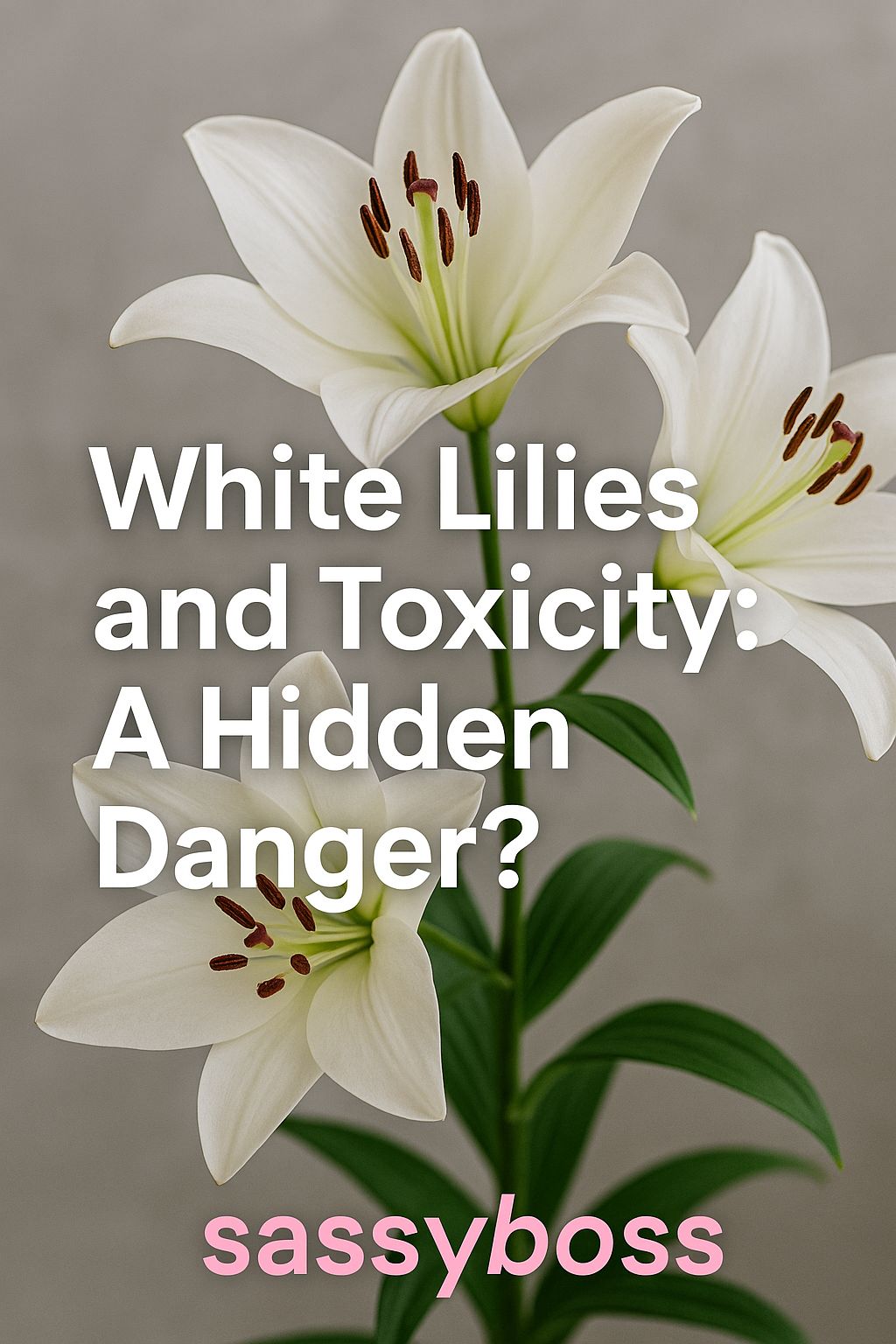White Lilies and Toxicity: A Hidden Danger?
One of the most tasteful and aromatic flowers used in gardens, homes, and floral arrangements are white lilies. They are a favorite option for religious rituals, weddings, and funerals because of their trumpet-shaped petals, gentle light, and symbolic meanings of peace, purity, and renewal. However, there is a significant question that lies beneath their beauty: are white lilies toxic? Yes, and the risk may be far higher than most people think, depending on the situation.
This article will explain the hidden dangers of white lilies, particularly for young children and dogs, how to spot harmful exposure, and what to do if you wish to keep these flowers around.
The Allure of White Lilies
The Lilium genus contains white lilies, including the Madonna lily (Lilium candidum), Easter lily (Lilium longiflorum), and others. In many cultures, their pure white hue and subtle scent stand for purity, innocence, and spirituality.
Due to these positive associations, white lilies are frequently featured in:
• Religious festivals
• Wedding bouquets
• Memorial arrangements
• Home and garden decor
But while their symbolism is beautiful, their biological properties warrant caution.
Toxic Components of Lilies
The species and target organism determine whether lilies are poisonous. Numerous species in the genera Lilium and Hemerocallis (daylilies) are so toxic to cats that they can develop severe, frequently fatal renal failure from just a small nibble, licking pollen from their fur, or drinking water from a vase filled with lilies.
Key toxic components include:
• Unknown water-soluble compounds that specifically affect feline kidneys
• Potentially irritant compounds in the plant sap that can cause mouth and digestive tract irritation in other animals and humans
Interestingly, dogs and humans are less severely affected by lilies than cats, but some species can still cause symptoms like stomach upset, vomiting, and diarrhea if ingested in significant quantities.
Why Are Lilies So Dangerous to Cats?
Although the precise lily toxin that causes cats’ deaths has not yet been determined, the consequences are disastrous. If not handled promptly, even very little doses can be lethal.
What happens when a cat is exposed to lilies?

1. Initial Symptoms (0–12 hours): Vomiting, loss of appetite, drooling, and lethargy.
2. Progressive Symptoms (12–24 hours): Increased thirst and urination due to kidney damage.
3. Critical Phase (24–72 hours): Severe kidney failure, reduced or no urine output, potentially coma or death.
Veterinarians strongly urge immediate intervention. If your cat ingests or even interacts with lilies, treatment within 6 hours can significantly improve the chance of survival.
What About Dogs and Humans?
Although some types of lilies, such as the Peace Lily (Spathiphyllum, which is not a genuine lily) and Calla Lily (Zantedeschia), can irritate the mouth, produce excessive drooling, and upset the stomach, dogs are much less sensitive to lilies than humans. Although they are unlikely to be lethal, true lilies (Lilium species) may give dogs moderate symptoms.
For humans—especially small children—consuming parts of the lily plant may lead to:
• Nausea or vomiting
• Diarrhea
• Mouth or throat irritation
However, severe poisoning in humans is rare. The real risk lies in allergic reactions (through pollen exposure) or if children ingest large quantities of the plant.
Non-Toxic Lily Lookalikes
It’s important to distinguish between true lilies and plants that just look like them. For instance:

• Daylilies (Hemerocallis): Also toxic to cats
• Peace Lily (Spathiphyllum): Mildly toxic to pets and humans
• Calla Lily (Zantedeschia): Contains calcium oxalate crystals, irritating but not fatal
• Lily of the Valley (Convallaria majalis): Extremely toxic to humans and animals due to cardiac glycosides
While some of these aren’t true lilies, they’re still commonly referred to as lilies and carry their own set of risks.
Signs of Lily Poisoning
If you suspect lily poisoning in a pet or person, immediate attention is critical. Here’s what to watch for:
In Cats:
• Vomiting
• Drooling
• Lethargy
• Refusal to eat
• Tremors or seizures (in advanced stages)
In Dogs:
• Chewing or pawing at the mouth
• Vomiting or diarrhea
• General discomfort
In Humans:
• Burning sensation in the mouth or throat
• Nausea or vomiting
• Difficulty swallowing (if oral irritation occurs)
Contact your veterinarian or poison control center immediately if any symptoms appear following lily exposure.
Prevention Tips: Keeping Lilies Safely

If you’re a lily lover but live with pets or children, consider these safety tips:
1. Avoid lilies altogether if you have cats. The risk is simply too great. Opt for pet-safe alternatives like orchids, roses, or sunflowers.
2. Keep lilies out of reach. High shelves or closed-off rooms may prevent accidental contact by children or dogs.
3. Clean up pollen and petals promptly. Lilies shed heavily, and fallen debris can pose a risk.
4. Do not allow pets to drink from flower vase water. This water can contain toxic leachates from the plant.
5. Educate visitors and gift-givers. If someone brings you a floral arrangement, check for lilies before placing them anywhere accessible.
Safer Alternatives for Pet Owners
If you’re decorating your home or buying gifts for someone with pets, try these non-toxic flowers:

• Gerbera daisies
• Snapdragons
• Roses (without pesticides)
• Marigolds
• Zinnias
• African violets
These offer vibrant colors and aesthetic value without putting beloved animals at risk
Conclusion
Despite their obvious beauty, white lilies are a hidden hazard in many homes due to their poisonous qualities, particularly to cats. You may make sure that your floral selections provide happiness rather than damage by being aware of the hazards and adopting preventative measures.
Before introducing a plant into your house, check with a veterinarian or a plant toxicity site if you have any questions about its safety. Your child’s, pet’s, or your own health should never be sacrificed for beauty.
